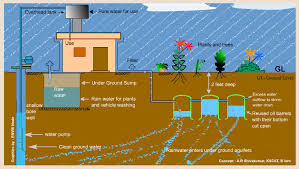Over
the past month, there have been repeated calls from environmentalists and
activists for drastic measures on part of the administration to clean the toxic
air in Delhi, considered the world’s most polluted city. Studies have shown
that vehicular emissions and dust from construction sites account for rising
air pollution levels and smog in the city.
This
year, the outcry has seen a slew of measures proposed by the state government
as well as the Supreme Court of India so as to ensure that future generations
are not harmed by the air.
The
following are some of these measures:
1.
The Delhi government has proposed the odd/even rule wherein cars with
odd-numbered registration plates would ply on odd dates and those with
even-numbered registration plates would do so on even dates. The idea is to
reduce congestion as well as to reduce pollution resulting from vehicular
emissions.
2.
The top court has asked the Centre to supply the Delhi traffic police with
proper masks. The court noted that the policemen, who stand for long hours at
traffic signals, should be supplied with masks so that their health is not
compromised.
3.
The Supreme Court has also banned the registration of luxury SUVs and diesel
cars above 2000cc in the national capital. Diesel cars are believed to be a
major source of vehicular emissions. A bench headed by the Chief Justice had
noted that it was not fair for rich people to buy luxury cars and thus pollute
Delhi.
4.
The green cess on commercial vehicles entering Delhi has been hiked by the top
court by a whopping 100 per cent. The SC-appointed Environment Pollution
Control Authority has directed the Delhi government to install boards notifying
the new cess in 125 toll booths across Delhi.
5.
The top court has ordered that all taxis plying in the city must convert to CNG
from March next year. Also, commercial vehicles which are registered before
2005 won’t be allowed to enter the national capital.
6.
The National Green Tribunal (NGT) has issued directions to all authorities to
strictly implement earlier orders regarding the ban on burning of waste and
fine on emission of construction dust. The bench called for an action taken
report as well as a “list of offenders” from all authorities on the next date
of hearing.
7.
The NGT has asked the central and state government not to buy diesel vehicles
for its personnel. It also asked public administration departments and
municipal bodies to take efforts to gradually phase out diesel vehicles.
8.
In a separate order, the NGT directed the state governments of Delhi, Punjab,
Rajasthan, Haryana and Uttar Pradesh to immediately ban the burning of crop
residue. In earlier orders, the NGT had noted that the practice was
contributing to the rising air pollution in the NCR.
9.
To give alternative modes of transport to people during the odd-even rule, the
government said it would add 1,000 more buses in three months. Also, 9,000 CNG
contract carriages will be roped into Delhi to augment public transport.
10. The
Delhi government has imposed an environment compensation penalty of Rs 50,000
on 38 major projects across the city for causing dust pollution. Officials said
notices have been sent to all the projects. While a few of the projects have
replied asking for ‘reconsideration’ of the compensation fee, 26 of them are
yet to file their replies.




























